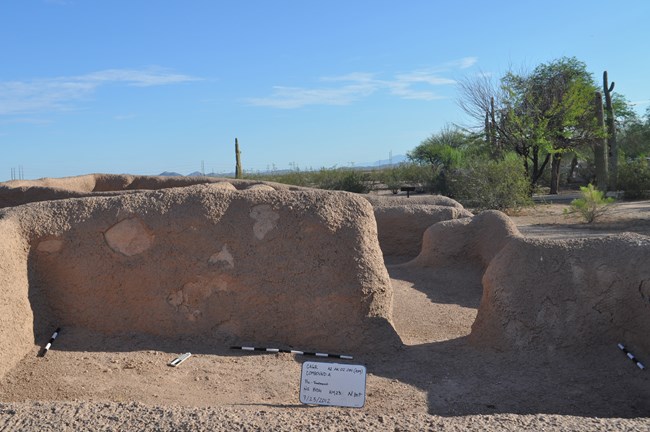
NPS Nowadays archeologists use less invasive ways to explore. Ground-penetrating radar can show us walls still hidden underground—without digging. High-definition laser scans minutely measure structures. Laser scans can reveal what has been lost to erosion over the years. Throughout the National Park Service these days, archeologists strive to use nondestructive technologies. Here at Casa Grande Ruins you can see preservation archeology practiced. Walls are regularly coated with a mud mixture to protect them from damage from the wind and rain.
Jesse Walter Fewkes first excavated here in 1906–1908. Fewkes wanted to make Casa Grande Ruins into "the first Exhibition Ruin." This was then a completely new idea: preserve an archeological site and use it to educate visitors.
A PDF of the wayside (15,146 KB) is available.
|
Last updated: April 6, 2020
